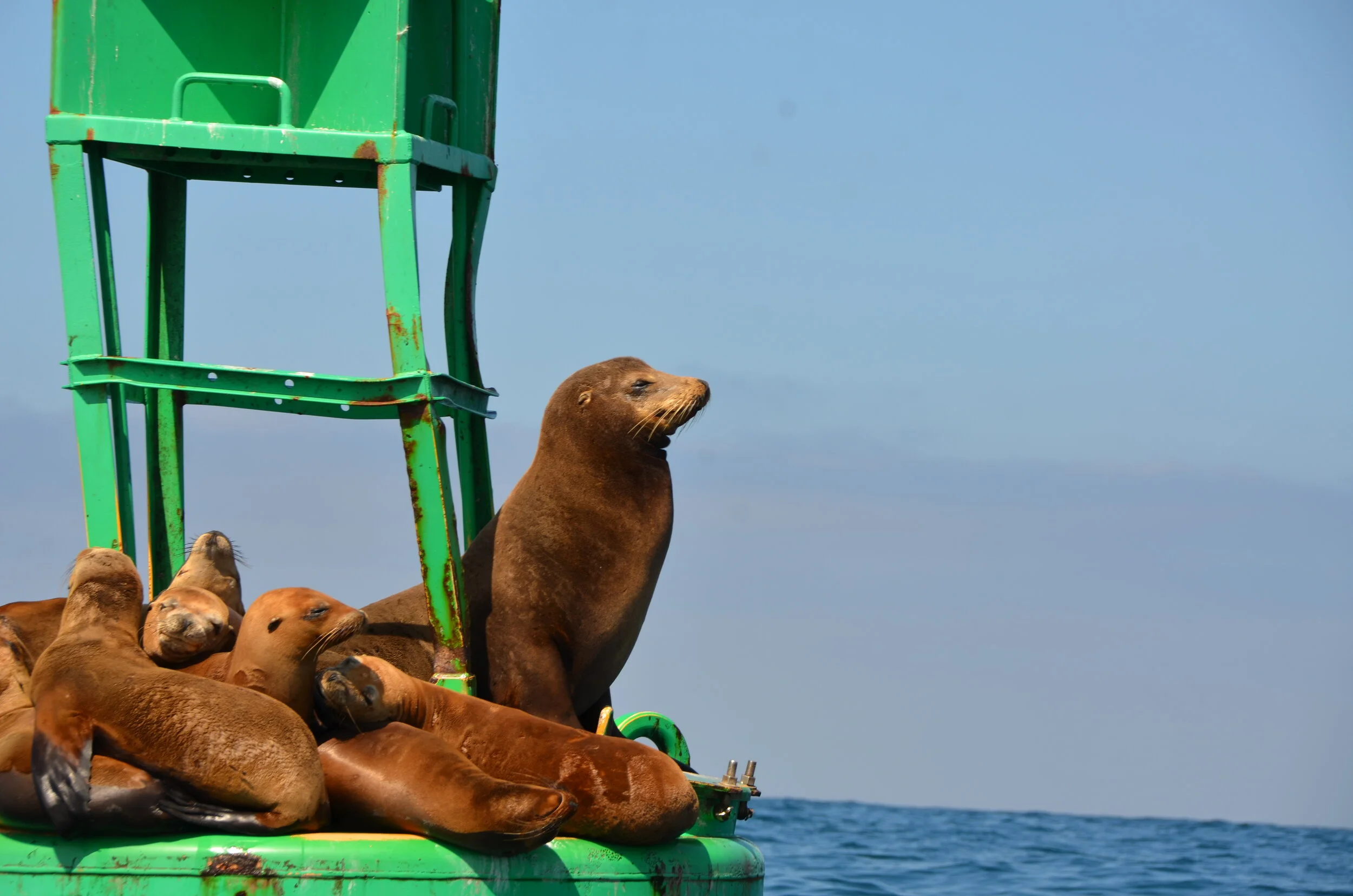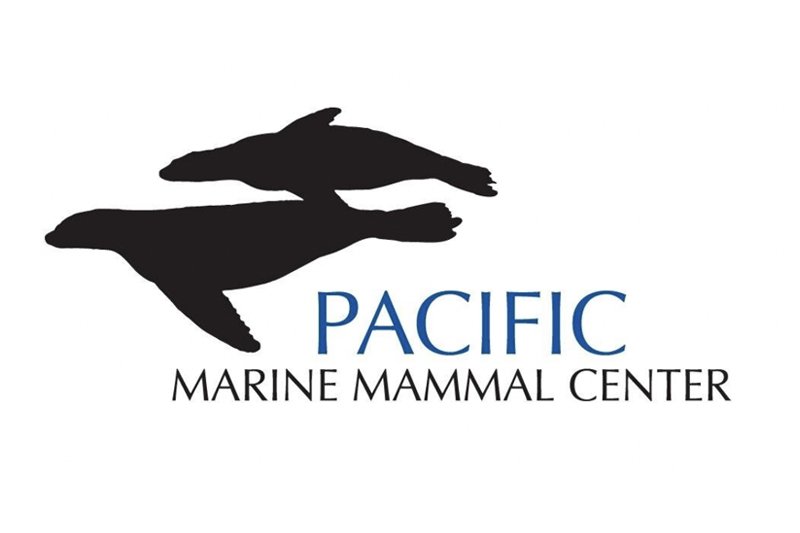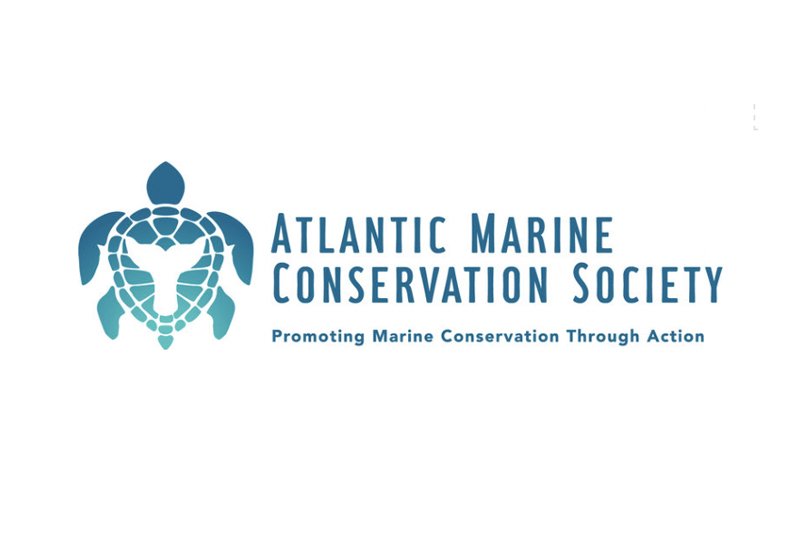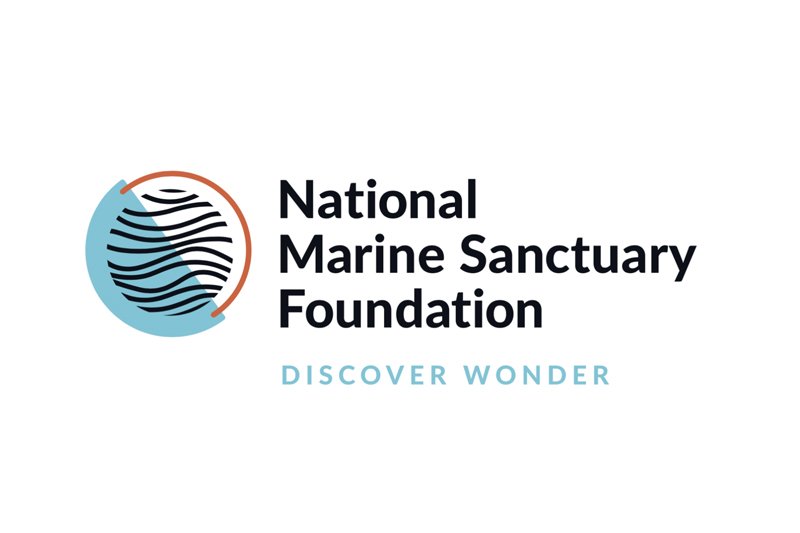Since January 2013, elevated levels of malnourished sea lion pups and yearlings have been stranded on California beaches. More than 2,000 young sea lions have washed ashore in 2015 alone, too emaciated and dehydrated to care for themselves. Additionally, highly elevated numbers of Guadalupe fur seals, a species listed as Threatened under the Endangered Species Act, have also been noted. The unprecedented crisis has been declared an Unusual Mortality Event (UME), and rescue and rehabilitation networks are utilizing limited resources to respond.
Atlantic Marine Conservation Society worked with Pacific Marine Mammal Center, National Marine Fisheries Service, Marine Mammal Care Center of Los Angeles, Channel Islands Marine Wildlife Institution, and SeaWorld San Diego to track rehabilitated sea lion pups and fur seals of all ages after release in order to ensure rescue efforts maximize long-term survival of California sea lions and Guadalupe fur seals. While the direct and indirect causes of current elevated strandings are still under investigation, it is critical for rescue and rehabilitation programs to determine release success and long-term survival rates. This project was supported by the National Marine Sanctuary Foundation.
READ MORE ABOUT THIS PROJECT HERE.
For tracking maps for animals in this project, click below.
HIGHLIGHTS
LAURA
Laura is a female sea lion that was rescued as a yearling from Cotton’s Point in San Clemente, CA on June 2, 2013. Emaciated and dehydrated, she spent 70 days in rehabilitation. Laura gained 25kg during this time and once deemed healthy, she was released back into the wild at Crescent Beach in Laguna, CA on August 11, 2013. Outfitted with an orange plastic Roto flipper tag with a unique identification number, we have been able to monitor her movements post-release, an invaluable tool to measure the success of rehabilitation efforts. Laura was observed three years later by a researcher in La Jolla Point. She was observed again in 2019, alert, vocalizing, and nursing her one year old pup, her newborn pup, and a third ‘adopted’ animal! She is a prime example of how tagging efforts can bring communities together, and get the public and other researchers involved in tracking animals.
Laura is an example of post-release monitoring without a satellite tag. Following guidelines set in place, the public was able to get photos and confirm the sea lion was doing well. This particular project pooled resources from citizen scientists and researchers from the California coast to understand where these animals go post-release. In the case of Laura, she was reported by a citizen scientist that volunteers with the network, sharing sighting data and helping the project to keep going today.
BUZZI
(Click on photo above for tracking map)
Buzzi, a female California sea lion who was cared for and released in 2016 by Pacific Marine Mammal Center, provides a great story for this research project. Buzzi was rescued from Dana Point Harbor (and was very underweight, weighing only 47 pounds. She was nursed back to health and gained 40 pounds while receiving care. Buzzi was released on February 26, 2016 at Crystal Cove, CA with a satellite tag affixed to her back. She was observed at a haul out site in March 2016. The satellite tag was present and unencumbered. This sea lion was later observed at Dana Point, CA, a known haul out site, in July 2016 with fishing line tangled in the satellite tag. The last sighting of Buzzi occurred in September 2016, when Buzzi was again observed at Dana Point with other California Sea Lions. While the satellite tag was no longer attached to her fur, the area that the tag was attached to seem unaffected and the animal was in good body condition. This observation proved invaluable to the project, as Buzzi returned to the rescue site, was tracked to a known haul out site, and observed with conspecifics. This demonstrates that satellite tag attachment does not alter the animal’s natural behavior and implies that satellite tagging does not cause the animal any permanent impairments.
SKIPPY
(Click on photo for tracking map)
Skippy, a California sea lion, was rescued from Huntington Harbor, CA on May 9, 2015. Skippy was severely emaciated, weighing only 31 pounds upon admit to Pacific Marine Mammal Center's rehabilitation hospital. Through nutritious food and excellent care, Skippy managed to gain 52 pounds during the 97 days in rehabilitation, and was released on August 14, 2015 with two other animals from this project. Skippy's satellite tag signaled for 102 days. Skippy was later observed (identified by the flipper tag attached before release) at a haul out site with other California sea lions after the satellite tag had detached.
JAYWALKER
(Click on photo above for tracking map)
Jaywalker, a California sea lion who was cared for and released in 2015 by Pacific Marine Mammal Center, is an interesting case. Jaywalker was rescued on April 2, 2015 from Capo Beach, CA and was very underweight, weighing only 22 pounds. Jaywalker was nursed back to health and gained 55 pounds while receiving care. Jaywalker was released on August 14, 2015 with a satellite tag affixed to her back. She was tracked for 59 days and is considered a successful release by the research project standards, which set more than 30 days signal retrieval as a positive outcome. Jaywalker was later seen on December 14, 2015 at Dana Point, an established haul out site for California sea lions. This was more than two months after Jaywalker's tag sent the last signal. As is protocol for all released California sea lions, Jaywalker was also outfitted with a plastic flipper tag, which led to the positive identification at Dana Point. While the satellite tag was no longer attached, the area that the tag was attached seemed unaffected. This further confirms that satellite tag attachment does not alter the animal’s natural behavior and implies that satellite tagging does not cause the animal any permanent impairments.
DREW
(Click on the photo above for tracking map)
Drew is a California Sea lion found on March 21, 2013 as part of multiple rescue calls led by Pacific Marine Mammal Center (PMMC). The female sea lion pup, weighing just 15 pounds, was found resting on the deck of a Capistrano Beach home. Drew was the 160th animal rescued to date, suffering from malnutrition and dehydration. After nine months of rehabilitation, she was cleared for release and received a flipper tag and satellite tag. On December 8, 2013 at 67 pounds, Drew was released at Crescent Bay in Laguna Beach, CA. This satellite tag enabled PMMC to monitor Drew’s location and add to the data from other satellite tags deployed from PMMC. These satellite tagging efforts in support of Unusual Mortality Event investigations were made possible with support from the National Marine Sanctuary Foundation to researchers from Atlantic Marine Conservation Society and PMMC. Drew was successfully reintroduced to the wild and after 53 days of tracking, her satellite tag stopped transmitting with more than 400 miles tracked from to lagoon in Northern Baja. The lagoon that she inhabits is also home to other sea lions and grey whales. PMMC staff have been in contact with staff of whale watch companies operating in this lagoon and they have reported seeing Drew, and report that she is doing well.
SW CALIFORNIA SEA LION- 15893B
(Click on photo above for tracking map)
This animal stranded near Venadito Canyon Beach in Goleta, CA on May 31, 2015. Just 11 days prior to this stranding, the Plains All America pipeline ruptured about one-mile northwest of Venadito Canyon near Refugio State Beach. This incident spilled over 100,000 gallons of crude oil, which made its way into the Pacific Ocean, impacting fish, seabirds and California sea lions. SW15893B was dehydrated and underweight when rescued, weighing only 35 pounds upon admit to the SeaWorld San Diego Rehabilitation Center. SW15893B spent 76 days in rehabilitation, and was released on August 15, 2015 after gaining 27 pounds! This California sea lion was released with other animals that had completed rehabilitation at SeaWorld San Diego, and was tracked for 47 days via the satellite tracker attached to his fur. Unfortunately, this animal encountered a shark, and was found dead on October 1, 2015.










